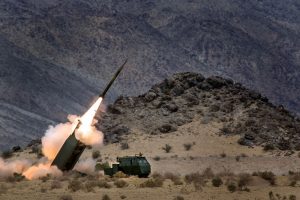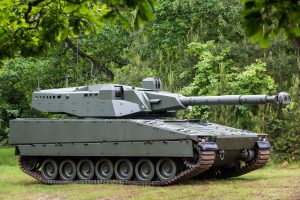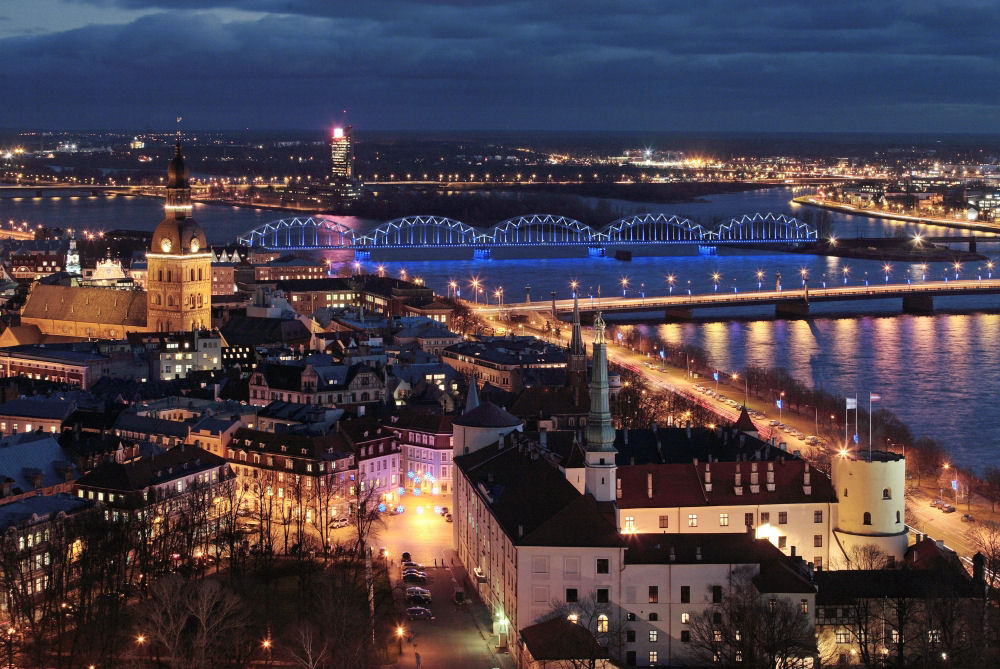The Baltic States of Estonia, Latvia and Lithuania are the most endangered. Freed from the Russian yoke but 25 years ago and for centuries oppressed and enslaved by Russia, the Baltic people are most aware of the threat posed by Russia’s resurgent nationalism… or at least Estonia is, because Latvia’s and Lithuania’s defense preparations are ridiculous. They scream for help, solidarity and Western forces to defend them, but have way too few soldiers, way too small defense budgets and an amazing lack of urgency. Personally I believe that if within this year both do not rectify this situation, NATO should only defend them while on its way to stand and fight with Estonia.
Latvia, with silly grandstanding, which would embarrass every other nation, announced that for 2015 it will spend an additional €28 million on its defense… let that sink in: €28 million or in the words of Latvia’s defense minister Vejonis: “Boosting national defense capabilities is our priority, which is clearly visible in the increased 2015 budget.” Now Latvia spends 1% of GDP on defense. NATO’s target is 2%, but for a nation under threat it should be more like 3%. According to the EU commission, Latvia’s GDP in 2014 was €23.8 billion and by the end of 2015 it should be approximately €24.5 billion. If Latvia would spend the bare minimum on defense, namely 2%, it would spend at a least €490 million for 2015. It’s actual spending: €253.8 million.
Lithuania used to be a similar defense spending laggard, but this year it increased defense spending by over 30% and will now spend €424.5 million
. Lithuania also re-introduced conscription. However, as Lithuania was spending the lowest percentage of GDP on defense in the entire EU, even after this increase its spending is still a paltry 1.11% of GDP. Estonia, on the other hand, always took defense seriously and continuously spent 2% of GDP and increased this to 2.05% for 2015. This year the smallest of the three Baltic nations will spend €412 million.
All three of the Baltic nations can spend more on defense. Their economies are growing; their national debts are low and their budget deficits well under the EU’s threshold of 3%. According to the EU Commission on 5 February 2015, Lithuania’s budget deficit was -1.4% of GDP and its national debt 41.8% of GDP, Latvia’s deficit was -1.1% and its debt 36.5% and Estonia’s -0.6% and 9.6%. Lithuania and Latvia could easily ramp up defense spending to 2%, especially as their corporate income taxes rates are 15%
, which are the lowest in the European Union safe for Bulgaria. And radically raising defense spending is absolutely viable as shown by a guy named Vladimir Putin, who increased the Russian defense budget by 43% in his first year in office and by an average of 21% every year since.
If all the Baltic nations were as serious as Estonia and spent 2% on defense, then their combined defense budget would be €1.62 billion instead of the current €1.09 billion. But 2% is not enough. At the end of the Cold War, Germany was spending 2.8% of GDP on defense, South Korea will spend 2.5% this year and Israel 5.6%. Therefore, the Baltic nations should spend at least 2.5% a year on defense. That would amount to €1.83 billion a year or nearly €750 million more than now. With a defense budget of this size, the Baltics could finance the forces to withstand a Russian attack for the three to four days it will take the US Air Force to smite Kaliningrad and attain air supremacy.
But even with an increased defense budget, the Baltics will not withstand a Russian attack because of the insanely small amount of active and reserve troops they field. Israel fields 2,142 active soldiers per 100,000 citizens, Greece 1,008 and the most serious Baltic nation Estonia 418 active troops per 100,000 citizens. That is actually an exceptional high number compared to Lithuania’s 269 troops and Latvia’s 232 troops. Why should an American president ask his 425 troops per 100,000 citizens to fight and die for Latvia or Lithuania, who don’t ask the same of their citizens?
The whole lack of seriousness of Latvia and Lithuania becomes evident when compared to Finland and Israel: Finland with 12% less population than the three Baltic nations combined fields six brigades in peacetime with 208 Leopard 2A4 tanks and an air force with 62 F-18 fighters, whereas the three Baltic nations field three active brigades with 0 tanks and 0 fighters. Israel with a population that is 32.4% bigger fields nine active brigades with over 2,000 tanks and over 400 fighters during peace; in case of war Israel will field an amazing 41 combat brigades, the while the Baltics will field at best 10 brigades during a war.
The Baltic States do not need to reach Israeli levels in active personnel numbers or field 1,677 active citizen-soldiers per 100,000 people as Switzerland does, but the Baltic Nations must increase their forces substantially. Estonia is already on the right path and aims to have 90,000 reserve forces by 2022. With such a high number of reservists Estonia will even overtake Israel and will be on par with the reserve levels of Finland. However, to its South Latvia and Lithuania are both undermining the brave work of Estonia by not fielding more troops. At least all three should field 600 active troops per 100,000 citizens and thus give them an active force of 37,000 troops, which is 5,000 more than the Russian troops garrisoned within 100 km of the Baltic States.
I group the Baltic nations together since the best way forward for the three is to merge part of their defense structure: a trilateral treaty binding Estonia, Latvia and Lithuania to spend 2.5% of GDP on defense, obliging them to have 600 active troops per 100,000 citizens, forcing them to coordinate their acquisition of equipment and establishing joint units for the most expensive equipment would create much stronger, more capable and harder to defeat armies. Right now the three countries waste immense amounts of money by going alone on everything. If they want to remain free, they need to stop this.

A few examples: together the three nations field 18 helicopters of 5 different types, thus needing 5 different training teams, 5 different maintenance teams and 5 different logistic supports units. Last year Estonia bought 44 CV90 tracked infantry fighting vehicles (IFV) from the Netherlands, while Latvia bought 123 CVR(T) from the United Kingdom. Two sets of vehicles with completely unrelated maintenance needs. If Lithuania will now buy something else all three countries will have to build up their own training, maintenance and logistic structure for their vehicles instead of one training center and one central logistic/maintenance depot. Also if the three nations coordinated and bought the same weapon systems together, the unit cost would drop. But now the Latvian CVR(T) Scimitars have a 30mm cannon and the Estonian CV90 have a 35mm cannon, making even ammunition sharing impossible.
Next in Estonia's plans is buying a self-propelled artillery system. If it buys it alone then it will be able to afford 24 at best. Lithuania’s artillery is also in dire need of modernization as the M101 howitzers it uses were produced between 1941 to 1953… Latvia uses an old Czech model, which cannot even fire standard NATO ammunition. Now if the three nations agreed to merge their procurement and agree on a common brigade structure, then they could acquire a modern and much more capable artillery system together. As together the three nations would buy up to 72 systems, all sellers would be very open to produce the system in the Baltic States, thus giving the three nations a chance to develop their own defense industries and thus spend their money on their soil. The brilliant Swedish Archer, the light French CAESAR, the tracked Polish AHS Krab or the American M109A7 – all of them could be partially produced and assembled in the Baltic States and with one system in use a single common training center will suffice. Spares and supplies – again buying in bulk will reduce the cost and having just one main depot will cut costs again. With defense spending at 2.5% and costs reduced by cooperating closely, it will be possible for the Baltic States to buy larger amounts of modern equipment.
What the triple alliance members need: for their armies – tanks, tracked infantry fighting vehicles and self-propelled artillery, for their territorial defense units – wheeled infantry fighting vehicles and light howitzers, for their air forces – utility helicopters, drones and a medium-range air-defense system. What they do not need is more ships and a fighter wing. A fighter wing is highly expensive and with all Baltic air bases in range of Russian anti-air and cruise missiles, fighters either won't be able to take to the skies or will be shot down within minutes. And if the Baltic nations ever invest in their own fighter wing, then Western NATO members would abandon the Baltic Air Policing mission. Therefore NEVER ever must the Baltics buy their own fighters. As for the Baltic Naval forces: the Russian Baltic Fleet is too strong and therefore a coastal missile battalion must suffice. Poland already employs the Norwegian Naval Strike Missile and the Baltic nations should acquire it too to sink Russian ships before they come near a Baltic shore.
But, like with other expensive and highly specialized equipment, the Baltic nations should first set up common battalions to employ this equipment. If they buy the Naval Strike Missile, then beforehand they should create a tri-national Coastal Artillery battalion. Such a tri-national battalion would field three Naval Strike Missile equipped companies, one Estonian, one Latvian, one Lithuanian, supported by a maintenance company and a supply company, with three platoons each (an Estonian, a Latvian and a Lithuanian platoon). During peacetime, the battalion would be managed by a tri-national command company, which will ensure that the three combat companies are well trained, maintained and equipped. If Russia attacks, the three companies, with their respective support platoons, will leave the battalion’s base and head to their nation to fight there.
With the same structure the Baltic nations should set up a tri-national helicopter wing with 24 utility helicopters in three squadrons that can deploy to their respective nations in case of war. Possible models are the American UH-60M Black Hawk and the European NH90. A common airlift wing providing tactical transport to all three nations can be set up with the same structure and a tri-national paratrooper battalion should be located right next to it. A HIMARS multiple rocket launch system with MGM-140 ATACMS missiles, if bought by the three nations together and managed in a common battalion, suddenly becomes a feasible weapon system. A UAV battalion, an Electronic Warfare battalion, even an air wing flying 12 South Korean KAI TA-50 Golden Eagle or Italian M-346 Master trainer aircraft would be a possibility. Unite and be strong or do your own thing and be weak and easy prey.

Most importantly, the three Baltic nations need a modern medium range air-defense system and tanks. The air-defense systems currently in service, namely RBS-70, Mistral, Stinger and Grom man portable air defense systems (MANPADS) , do not reach higher than 4-5km and have a range of just 6-8 km. The three Baltic nations do not need a high-end long-range system like the SAMP/T or the MIM-104 Patriot as Putin won’t fire a nuke at the three nations and risk contaminating his own troops, country or main shipping lane. Naturally, if the US, pleased by the common Baltic defense alliance and the increase in Baltic defense spending, increases its Foreign Military Financing to the Baltic nations, then one could always ask to get a battalion worth of MIM-104 launchers and radars for a tri-national battalion. US politicians would love such a common battalion, but in case the US will not provide an anti-air system, either the Norwegian NASAMS 2 or the Swedish BAMSE must be on the Baltics' shopping list. The NASAMS 2 can use a mix of IRIS-T and AIM-9X Sidewinder infrared homing missiles, and AIM-120 AMRAAM and RIM-162 ESSM radar homing missiles with a range of up to 40km and can hit targets 14km above ground. Likewise, the Swedish BAMSE system can hit targets up to 15km above ground and 20km away. Eight nations already field the NASAMS 2, including Norway and Finland, while the BAMSE is in service with Sweden. The big advantage for BAMSE is that both Lithuania and Estonia already operate BAMSE’s Giraffe AMB radar, thus making integration of the Fire Control Radar and missile launchers easy.

As for tanks, the Baltics would be well advised to opt for a light tank design as those are more agile than main battle tanks (MBT). MBTs weigh around 60 tonnes due to their thick composite armor while light tanks weigh 25-30 tonnes and are much cheaper to procure. Combining a light tank with an active protection system like the Israeli Trophy or the German AMAP-ADS would offer the same level of protection against anti-tank missiles and rocket propelled grenades as the thicker armor of MBTs, but at half the price. Two light tank models that would operate well in the Baltic States are the Polish-British PL-01, which is based on the Swedish CV90, and the CV90105, which is a variant of the CV90. Poland intends to buy a large number of PL-01 to equip its armored forces and as Poland, like the Baltic States, also needs a large number of tracked IFV, all four nations should agree on a common tank and IFV design and then produce and maintain it together to reduce costs and improve interoperability. Fielding a large number of mixed units of light tanks with a 105mm canon and tracked IFVs, some of which armed with anti-tank guided missiles, would give Baltic Armies the ability to ambush and decimate Russian forces and then retreat into the vast forests of the three nations to redeploy unseen for the next strike (Lithuania's soil is 33% forested, Latvia's 42% and Estonia's 50%). A mobile short-range air-defense system and an engineering vehicle built on the same chassis as the tank and IFV should be added to the aforementioned units to protect them from Russian attack helicopters and provide them with a vehicle capable to clear a path through the forests.
Ultimately, the defense of the Baltic nations stands and falls with their level of cooperation. Sweden has the easiest task: defend and hold Gotland, while Poland faces the unenviable task to fend off attacks on two sides: from Kaliningrad and Belarus, while at the same time being the main reserve force for the Baltics. Therefore, Poland has much higher financial, logistic and preparatory hurdles to clear before its military is capable to withstand each and every type of Russian attack. But as for the Baltics, nothing will give them as better chance to deter a Russian attack and in the worst case withstand it until help arrives, than combing their defense structures and leaving just operational command in national hands (for now).
All five nations under threat along the Baltic Sea will have to plan and prepare to fight on their own, as help from Western European nations is not something they can count on. Therefore, these nations, just like Romania and Ukraine, will have to prepare for the worst and with the current nationalistic hysteria sweeping Russia the worst is yet to come and it will come. Therefore either be prepared or surrender and acquiesce to living under the Russian yoke once more. I for my part say: Never!
This article is part of the article series Peace is Over, which also includes the following in-depth analysis of the current military capabilities and the required changes to defend Sweden and Poland:





